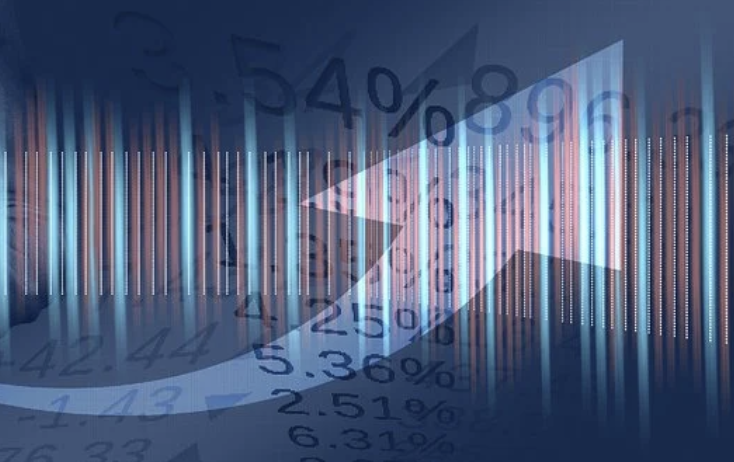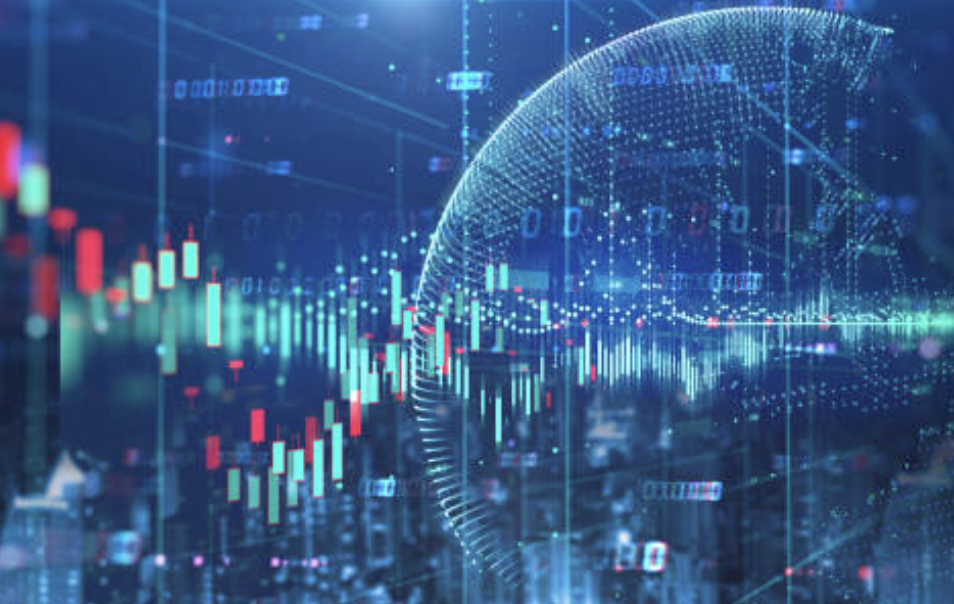
Larissa Barlow
Mar 29, 2022 16:43
When the whole world is getting out of control and the news cycle is full of bad news, you may be tempted to make unwise financial decisions, such as betting everything on a "better" bartering system based on commodities like gold or silver.
Is silver a good investment for you to make in 2022? Is silver going to outperform other precious metals like gold and platinum, or is it too risky? But, before you dive all your money into precious metals, let's clear up some misconceptions.

Silver is classed as a commodity, like gold and other natural resources. It is a publicly-traded, tangible asset. The prices of real assets tend to move to the opposite side of stocks and bonds.
As a result, the stock market is performing poorly, or when the economy or politics are in turmoil, many investors turn to commodities like silver. Silver can be a fantastic way to diversify and rebalance your portfolio in comparison to equities or other paper securities because it is influenced by a variety of factors.
Additionally, silver can be used to hedge against inflation. Unlike the dollar or other currencies, it is a tangible item with intrinsic worth. Silver holds its value for an extended period of time when interest rates are low — and fixed-income assets yield little income.
In many aspects, silver is similar to gold in terms of investment, functioning as a "safe haven" for investors. In contrast, silver is both an industrial and investment metal, which has a considerable impact on its price performance and forecast.
Silver is employed in a wide range of products, from glamorous jewelry to everyday batteries, medical equipment to microcircuits. It's also at the cutting edge of some cutting-edge fields.
Silver is used in various technological applications in solar energy and the electric vehicle industry due to its high conductivity. Given the tremendous expansion of these areas, many analysts believe that silver demand will skyrocket in the future years. As a result, silver investing can be a method to bet on technical advancements and the clean energy movement.
While gold, silver, and other precious metals have long been coveted and regarded as the most valuable possessions a person could own, are they good investments?
Let's have a look at the three major metals: gold, silver, and platinum.
It's easy to be caught up in the adventure and mystery of gold panning during the gold rush, pirate ships, and treasure maps when you consider the world's infatuation with gold. It's no surprise that we've been taught that gold is the most valuable possession we can have. Is that true, though?
Nope. Sorry to bust your 24-karat bubble, but gold isn't as valuable as you believe. Since President Richard Nixon halted the practice in 1971, the US dollar hasn't been possible to be turned into gold. 1 People used to buy gold bars as a means to diversify their investment portfolio and protect themselves from inflation. Instead of burying gold bars in their backyards, some investors invest in gold-related equities or mutual funds. But pay attention: Because the dollar is no longer guaranteed by gold, investing in the precious metal won't benefit you if inflation occurs.
So, if you decide to invest in gold because you think you'll be "one of the wise ones" if the currency falls, you might as well be flushing your money down the toilet.
You probably think of your grandmother's silverware (and the time she paid you to polish every spoon she possessed) or your favorite necklace when you think of silver. However, you're unlikely to associate it with mirrors, dental fillings, batteries, or even those touchscreen gloves you received for Christmas.
Some people believe silver is a better investment than gold because of its lower price, believing that if the markets ever move for the better, they will earn a better return. But here's the truth: Silver (like gold) isn't the key to a secure financial future. Gold and silver values are so volatile (and have been for a long time) that the only thing you can do with them in a crisis is hope that someone will take your silver coins or watch in exchange for a bag of toilet paper or a can of gas.
Platinum is used the most in jewelry. It's also used to create dental fillings, pacemakers, and vehicle parts like converters and spark plugs, which may surprise you. It's also commonly used in chemotherapy.
To avoid sounding like a broken record, platinum, like gold and silver, isn't the type of investment you're looking for. We recommend looking elsewhere if you want to be a fancy investor and expand your portfolio. Pay attention: Gold, silver, and platinum are examples of commodities and resources that will not protect you from inflation.
The price of silver per ounce is $27.78 on the world market, $0.89 per gram, and $893.15 per kilo.
There are several ways for you to buy silver. The most common silver investment options are given below.
Buying silver bullion bars is the most common way to invest in silver. Silver bar coins are available for purchase. This type of bar has a flat, rectangular shape. The silver bar can be conveniently kept at home or in a bank's safe deposit box.
The silver coin is another popular silver investment. Customers can purchase silver coins to keep at home. Fine and trash silver coins are the two sorts of silver coins. When purchasing silver coins, make sure to purchase a brand new, high-quality coin, as junk silver coins contain less metal.
COMEX allows investors to access the silver market without having to purchase actual bars. Many individuals choose this sort of silver investment since it is easy to understand, and there is no need to worry about storing the metal, but storage fees may apply.
You can buy a Silver Certificate of Ownership instead of a silver bar. It's also a desirable investment because it allows people to trade on the market without having to move physical silver.
Because you will not be dealing with actual silver, this is an indirect silver investment. Here, you'll be working with silver mining company shares. It's comparable to stock market investing. Publicly listed silver mining firms operate globally and can provide you with consistent profits. When silver prices rise, you'll observe that mining businesses will likely follow suit.
You can also invest in silver streaming firms, which do not directly deal with mining steel but instead offer you the opportunity to invest in stock exchanges. Silver price variations also have an impact on streaming companies, as they create a steady supply of funding that influences their stock.
It's no secret that precious metals are highly volatile, with prices fluctuating dramatically. This can either work for you or against you.
Emotional investment is a part of buying and selling commodities, even if people have a lot of experience in the market. You must deal with the difficulty of buying high and selling low.
When it comes to an investment like silver (which has traditionally been extremely volatile), you want to make sure you're buying cheap and selling as high much as possible. This may seem self-evident, but because individuals invest emotionally, knowing when to buy and sell can be difficult.
Silver isn't essential to our modern industrial culture, and it is mostly used for ornamentation and jewelry. That is to say, and its worth is primarily determined by its scarcity rather than its utility. Now, I'm not going to explain why this makes it a bad investment; it simply has no intrinsic worth.
One of the biggest issues with investing in silver is that there is a lot of fake silver out there, and few people can tell the difference between fake and genuine silver. As a result, many people invest in fake silver and lose a lot of money. Furthermore, not every silver dealer is trustworthy. As a result, finding the correct dealer and purchasing genuine silver is significantly more difficult.
Silver is a plentiful metal that may be found in significant quantities all around the world. On an ounce-by-ounce basis, silver is nearly 70 times more plentiful than gold. As a result, it is significantly less rare and thus less valuable.
Around half of all silver produced is used in manufacturing or industrial applications, while the remaining 20% is used in jewelry. Given its popularity as both an investment and a fashion ornament, silver's use in these sectors is unlikely to change very soon. The reduction of the amount of silver that is possibly accessible could lead to price inflation if demand outpaces supply.
Physical silver purchases are one of the safest ways to invest in silver, but there are some disadvantages. You will not need to pay management fees as you would with an ETF, but you will need a place to store your physical silver. Because many of us don't have a safe at home or a bank safe deposit box, this can make your investment more difficult.
It takes money to buy a safe or rent a safe deposit box at a bank. This can be a reoccurring monthly expense that eats into your potential profits.
Depending on the size and location, the cost of renting a Safe Deposit Box can range from $20 to $200 each year. A good secure safe, on the other hand, can cost thousands of dollars to buy and install in your home.
Most bullion providers provide storage for your gold, so you don't have to worry about it, but this is another long-term expense that detracts from your investment returns.
Silver, as compared to gold and platinum, performs the worst among precious metals. Even though it does not perform as well as gold in times of economic stability, it is just as volatile, if not more so, when other elements such as geopolitical turbulence of war are present, prompting governments to stockpile it for survival purposes. However, silver and gold are expected to enjoy a bull run in 2022, according to some analysts.
You're essentially investing in a trust that holds genuine silver when you invest in a silver ETF. Isn't that sounding safe? Not at all. These trusts are frequently exceedingly dangerous and have been known to drop in value in lockstep with the price of silver; in some cases, the volatility is much worse. The fact that as interest rates rise, commodity prices fall is supported by evidence. This is dangerous, especially since the Federal Reserve of the United States will begin hiking interest rates in September 2022.
Physical silver will not pay you any money unless you invest in any silver mining companies (dividends).
Having an investment that is exclusively based on appreciation (value growth) can detract from the attraction of investing. If this was your retirement money, you'd need to either generate cash from somewhere else or sell your silver to generate cash.
There are many different revenue streams and ways to earn money, but if you have to sell your assets to make ends meet, you may run out of things to sell.
When you add in the volatility that silver has displayed throughout the years, you can wind up selling for less and less just to make ends meet.
You can, of course, invest in other silver-related investments such as ETFs or individual equities, but their overall share price gain will always be linked to the spot price of silver. This means that even if you invest in dividend-paying silver mining stocks, if the price of silver falls, the miners' income falls, resulting in a drop in stock price and overall dividend payout.
When it comes to investing, people usually compare silver to gold. They have the same physical asset strengths as stocks and stock markets: counterweights, safe havens from socio-political shocks, and inflation hedges. However, there are numerous significant differences between the two precious metals.
Silver is far less expensive than gold. Its spot price in the financial market has never surpassed $50 per ounce in the twenty-first century. The price of gold is in the four figures. As a result, silver is far more affordable: Silver is a lot more valuable than gold for the same dollar investment, and silver has higher profit potential.
However, getting more bang for your buck is a double-edged sword. Physically, silver takes up more space than gold. Because the same amount of investment buys more silver than gold, silver assets will take up a lot more room and cost a lot more to keep and move. Oh, and it also tarnishes.
The silver market is a fraction of the size of the gold market. Because it is less widely traded than gold, silver can exhibit significantly greater volatility, or price swings, than its gleaming cousin, such as a jump of 13% in a single day.
Those trying to sell silver will probably have a harder time finding a buyer than those looking to sell gold. Simply put, the gold market is more well-known and understood. It provides a broader range of safe and recognized investment options.
Silver is particularly subject to recession and pressures impacting manufacturing enterprises because it is an industrial metal. Such variables can influence gold, which has industrial applications as well, but gold is mostly driven by investor mood. As a result, gold is a more pure and effective hedge against the economy and stock market.
Silver has a low profile, especially when compared to gold, despite its affordability and industrial usage. According to Cameron, investor demand now accounts for only 15% of the market, compared to industrial applications, implying that the commodity is both under-owned and undervalued. It's also still very inexpensive — especially in contrast to gold — giving investors more purchasing options.
On the other hand, the silver price is more volatile than the gold price. These characteristics, combined with the silver market's reliance on many businesses, make it difficult to anticipate what the market will look like in 10 minutes, let alone ten years. For these reasons, it's generally best for beginner investors to stay away from the stock market and stick with plain old gold if they want a safe haven.
Silver, on the other hand, could be a smart choice if you're a little more experienced and have a risk appetite. The combination of a positive market and growing demand from both the industrial sector and financial investors may make this the ideal time to take the leap.

Mar 28, 2022 17:42

Mar 29, 2022 16:53